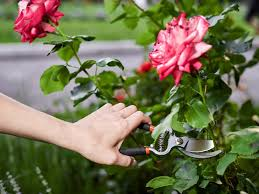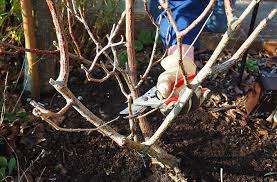Spring-blooming perennials add vibrant color to your landscape, bringing life after the winter months. To ensure their health and encourage continued blooming, proper pruning is key. But pruning during the bloom period can seem tricky—how do you trim a plant without removing the beautiful flowers?
Pruning springtime bloomers comes with many benefits: it enhances the plant’s health, boosts its appearance, and promotes more abundant flowers. However, it’s not just a matter of cutting back; timing, technique, and tools all play a significant role. Here’s a comprehensive guide to pruning blooming plants in spring.
Why Prune Blooming Plants?
Aesthetics: Even healthy plants may need shaping. Pruning certain branches can drastically change a plant’s form, often with minimal cuts.
Health: Removing damaged, dead, or diseased branches prevents pests and pathogens from entering and causing further damage. Pruning also helps the plant focus its energy on new, healthy growth.
Vigor: Pruning encourages plants to grow more vigorously by balancing their roots and shoots. Removing overgrown branches allows the plant to direct energy towards fresh growth, resulting in a fuller, more robust plant.

What You’ll Need
Personal Protective Equipment (PPE): Safety glasses and puncture-proof gloves are essential for protecting yourself from sharp debris and accidental cuts while pruning.
- Safety Glasses: Protect your eyes from wood shavings and sharp points.
- Puncture-Proof Gloves: Essential for safeguarding your hands against accidental cuts.
Pruning Tools:
- Hand Pruners: Ideal for small branches under an inch thick. Bypass pruners are best for clean cuts.
- Loppers: Use for branches up to 2 inches thick. Choose bypass loppers for live wood.
- Pruning Saw: For branches too thick for loppers, pruning saws make precise cuts even in dense areas.
- Isopropyl Alcohol: Sterilize tools between cuts to prevent disease spread. Use a concentration of 70-99%.

When to Prune
The timing of pruning is crucial for the plant’s health and blooming cycle. Generally, pruning just before spring’s bud break stimulates growth for the season. However, for plants that bloom before mid-June, wait until after flowering to prune. If your plant blooms in summer or later, prune in late winter to early spring, allowing it time to recover before blooming.
How to Make Your Cuts
Here’s a step-by-step guide for pruning, starting with the most important tasks:
- Remove Dead or Diseased Growth: Cut away any damaged or diseased branches at any time of the year to prevent further spread of illness.
- Deadhead Spent Flowers: Remove spent blooms and their stems to encourage more flowers and tidy up the plant.
- Establish a Central Leader: For plants that need a central leader, select the strongest, most vertical stem to serve as the main leader, removing any competing ones.
- Remove Crossing or Rubbing Branches: These can cause injury to the plant over time. Keep branches that form a nearly 90-degree angle with the trunk.
- Shape the Plant: Trim branches that grow in awkward directions or disrupt the plant’s shape. Also, cut any branches that grow faster than the others, creating a lopsided appearance.
- Make Clean Cuts: When cutting large branches, use the three-cut method to avoid tearing the bark. Always make cuts parallel to the trunk to prevent moisture buildup.

Important Tip: Never remove more than a third of the plant’s aboveground mass at once. Over-pruning can stress the plant, hindering its growth and vitality.
Final Thoughts
Pruning is essential for maintaining healthy, beautiful spring-blooming plants. With the right tools, timing, and techniques, you can encourage vigorous growth, better blooms, and a more attractive landscape. As you gain experience, this process will become a natural part of your gardening routine. Happy pruning!
